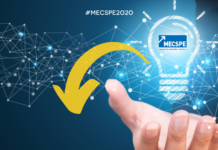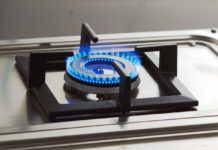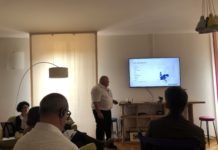The innovative use of X-rays for the line-end product inspection allows the efficacious control of each single item, accurately detecting production defects that are invisible with the naked eye. Without the limits of the standard sample check.
Identifying the presence of foreign bodies, noxious substances and materials inside foods and drugs, as well as the possible manufacturing defects of a device, invisible with the naked eye, allows companies to improve their manufacturing performances, taking advantage of a double aspect: a minor risk of withdrawal of entire production batches from the market, in case of serious incompliances, and higher economic and environmental sustainability. Thanks to an innovative system that integrates a conveyor belt and a smart device for the X-ray inspection, able to fulfil targeted precise detections on “sight unseen” products, without destroying them; installed at the line end, it enables the efficacious control of each single product, exceeding the limits of a standard sample check.
The idea developed by the Milanese start-up Xnext opens new prospects in the management of industrial processes, first of all in the food industry. An innovation boost that deserved the WPP Innovator award promoted by WPP (international-ranking company in the Communication Services sector), “Amici della Triennale” and “La Triennale di Milano”, dedicated to start-ups that have best expressed creativity, ingeniousness and entrepreneurship, applying the technological component to more traditional ambits, too.
The core of the system ideated by Xnext is XSpectra, a sensor for the real-time inspection that uses X-rays in innovative manner, analysing in real time the chemical-physical characteristics of materials and identifying the eventual presence of foreign bodies, not detected with the naked eye. In addition to the food sector, it can be applied in several industrial sectors to carry out non-destructive tests directly in the production line: pharmaceutical, tire control, household appliances, up to the material recycling and the implementation of safety controls in airports.
For the development of XSpectra, Xnext, start-up that employs sixteen workers and around fifty members acquired along the years through two crowdfunding operations, has spent over eight years in research and development, with an all-round approach encompassing the fields of photonics, nuclear electronics and artificial intelligence algorithms of deep learning.

The idea stems in 2011, when twenty years after their common university studies in Engineering, the two founders of Xnext, Bruno Garavelli and Pietro Pozzi, both with a professional past career in the aerospace sector, decide to join resources and competences gained on the field to solve, with an innovative approach, the still open problems of product quality control inside production lines. Facing the scandal of the milk contaminated by melamine, which in China reaped victims among kids, “we wondered whether might exist new technologies to carry out controls and chemical-physical analyses of food in production line – explains Bruno Garavelli, CEO of Xnext -. The project has involved research centres, enterprises and professionals and, in 2014, we started the pre-competitive development with the start-up establishment. From here began the commercial product development we accomplished last year. At present we are testing the system in various production ambits, first of all the food industry”.
The production of Xnext focuses on sensors (concerning photonics, from the development of the crystal hardware that intercepts X-rays in analysis phase), on micro-electronics (microchips designed in collaboration with Milan Polytechnics) and artificial intelligence algorithms that rule the action and the analysis of the material.
 The process is (apparently) simple: in control phase, the product slides on a conveyor belt and it is scanned inside a tunnel, positioned at the line end. A multispectral X-ray source lights up the product with flat beam while the sensor detects its penetration inside the mass; the analysis obtained assesses the conformity or the non-conformity with relative safety parameters. In Xnext design, explains Garavelli, “X-rays are used fully differently from what currently happens and they allow identifying the product characteristics, otherwise not identifiable, with a high precision degree, through the chemically different response, like the presence of contaminants, foreign bodies, plastics or insects in the already packaged food, ready for shipment”.
The process is (apparently) simple: in control phase, the product slides on a conveyor belt and it is scanned inside a tunnel, positioned at the line end. A multispectral X-ray source lights up the product with flat beam while the sensor detects its penetration inside the mass; the analysis obtained assesses the conformity or the non-conformity with relative safety parameters. In Xnext design, explains Garavelli, “X-rays are used fully differently from what currently happens and they allow identifying the product characteristics, otherwise not identifiable, with a high precision degree, through the chemically different response, like the presence of contaminants, foreign bodies, plastics or insects in the already packaged food, ready for shipment”.
The primary application field of XSpectra is the food industry. However, in the future the whole industrial sector, besides others, will find an important partner in this solution to guarantee the final product quality. Going beyond the standard sample check that implies the risk, owing to a single non-compliant item, of having to withdraw an entire production batch from the market, with noteworthy cost burdens. “To make an example, the withdrawal of a single pack of 125- gram tinned tomato pulp implies the waste of 225 litres of water consumed for the production and 1.5 kg of CO2, with a relevant economic and environmental impact, besides a brand image damage”. Speaking of household appliances, “the example of the refrigerator is fitting, if we think of the possibility of detecting for each single piece the presence of eventual air bubbles, which are invisible with naked eye, inside the thermo-insulating resin”. The other application fields where XSpectra can be a priority partner in the next future are automotive, the pharmaceutical sector and safety in airports. Not only. “In collaboration with the National Research Council and the Ministry for the Environment we are working at a research programme about the material recycling, as our technology allows identifying more in-depth their features, better distinguishing among the different typologies of similar materials, like for instance two plastic types”.




